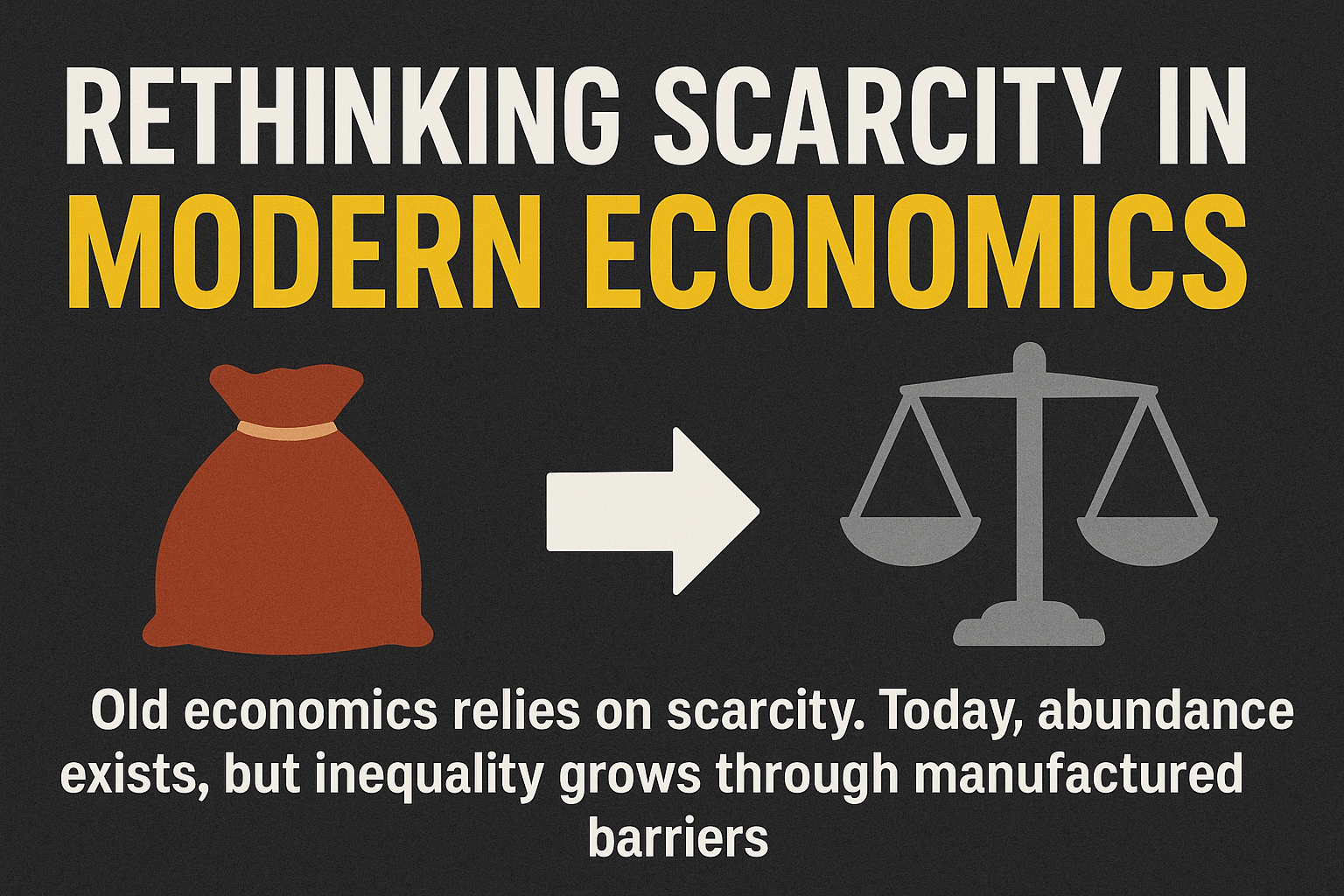Old economics relies on scarcity. Today, abundance exists, but inequality grows through manufactured barriers. Discover why GDP no longer defines progress.
Richard Murphy points to the way economics is still defined by sources like Investopedia:
“Economics is a social science concerned with the production, distribution, and consumption of goods and services. It’s comprised of broader macroeconomics and consumer-centric microeconomics.”
This framework assumes scarcity. But as Murphy argues, scarcity today is largely manufactured. We don’t lack the ability to produce; instead, we create barriers to access. A simple bag is abundant. A Gucci bag, however, is limited — and that artificial scarcity fuels demand.
The game is no longer about need, but about symbolism: more wealth, more desirability, more success. Yet as the article notes, “wherever there is more, there must be less in comparison.” Scarcity becomes zero-sum.
Scarcity in Historical Context
When classical economic theories were born, scarcity was real. Technology couldn’t sustain abundance. Goods were produced locally; shipping was expensive and limited. Local economies survived on what they could make or grow nearby.
Now, with global trade and advanced manufacturing, “scarcity has been nearly eliminated.” There’s enough food, energy, and materials to support everyone. The real problem isn’t production — “The issue we have isn’t having enough; it is making enough money from what we have.”
GDP and the Obsession with Growth
Economic success is measured by Gross Domestic Product. GDP growth must rise constantly, or else it signals decline. But this obsession is not tied to human progress. As the text explains:
“It has nothing to do with efficiency, sustainability, quality of life, or actual progress; it is all to do with achieving the arbitrary goal of more.”
This endless growth model creates inequality. Compound growth favors the wealthy, while class mobility shrinks. Meritocracy falters, and the gap widens to extremes.

Growth vs. Manufactured Needs
Growth has its place — when it meets genuine needs. But today, much of growth is driven by false needs. New markets are stimulated “not to better lives, but to extract more resources.”
As those false needs expand, growth begins to “cannibalize the market.” The system consumes itself in order to feed its hunger for “more.”
The Breaking Point of Old Economics
The old models are cracking. “The system is strained. The old economic models are not built for the economy we have created in the last century.” Scarcity is no longer the problem — distribution is.
Yet resources are distributed “in ways that only match one’s level of greed and the depth of their pockets.” Manufactured scarcity in essentials like food, housing, and health care ensures that winners and losers are locked into place.
Changing the Metrics
If GDP is outdated, what should replace it? The article suggests alternatives:
“It is time to ditch GDP as the end-all be-all metric and move to something more like a happiness index.”
Unlike GDP, happiness is measurable in terms that matter to people — jobs, security, services, quality of life. As the text bluntly states, “Happy people don’t revolt; hungry people do.”
A Personal Economy
At the individual level, the same logic applies. You don’t have to measure your life in terms of endless growth. Instead of chasing “more,” you can choose metrics like purpose, fulfillment, and enough.
“More today means less tomorrow,” the article reminds us. Life isn’t zero-sum, but finite. Extract too much, and the system collapses.
The piece closes with a personal reflection: shifting from a “more” mentality to “enough.” Just as governments need to rethink GDP, individuals can move away from consumption and toward their own happiness index.




